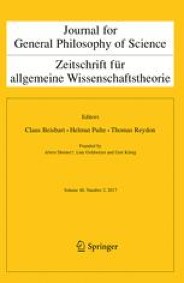 ABSTRACT: Penrose’s conformal cyclic cosmology describes the cosmos as a collection of successive universes, the so-called aeons. The beginning and ending of our universe are directly connected to two other, anterior and posterior, universes. Penrose considers but rules out a different interpretation of conformal cyclic cosmology: that the beginning of our universe is connected to its own end in a cosmic loop. The paper argues that the view, aeon monism, should be regarded as a natural interpretation of conformal cyclic cosmology and discusses its implications for the concept of eternal return in light of the most popular metaphysics of time.
ABSTRACT: Penrose’s conformal cyclic cosmology describes the cosmos as a collection of successive universes, the so-called aeons. The beginning and ending of our universe are directly connected to two other, anterior and posterior, universes. Penrose considers but rules out a different interpretation of conformal cyclic cosmology: that the beginning of our universe is connected to its own end in a cosmic loop. The paper argues that the view, aeon monism, should be regarded as a natural interpretation of conformal cyclic cosmology and discusses its implications for the concept of eternal return in light of the most popular metaphysics of time.
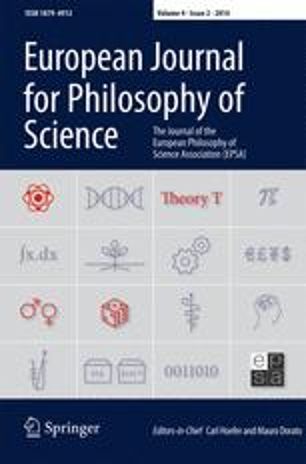 ABSTRACT: The question of whether Everettian quantum mechanics (EQM) justifies the existence of metaphysical indeterminacy has recently come to the fore. Metaphysical indeterminacy has been argued to emerge from three sources: coherent superpositions, the indefinite number of branches in the quantum multiverse and the nature of these branches. This paper reviews the evidence and concludes that those arguments don’t rely on EQM alone and rest on metaphysical auxiliary assumptions that transcend the physics of EQM. We show how EQM can be ontologically interpreted without positing metaphysical indeterminacy by adopting a deflationary attitude towards branches. Two ways of developing the deflationary view are then proposed: one where branches are eliminated, and another where they are reduced to the universal quantum state.
ABSTRACT: The question of whether Everettian quantum mechanics (EQM) justifies the existence of metaphysical indeterminacy has recently come to the fore. Metaphysical indeterminacy has been argued to emerge from three sources: coherent superpositions, the indefinite number of branches in the quantum multiverse and the nature of these branches. This paper reviews the evidence and concludes that those arguments don’t rely on EQM alone and rest on metaphysical auxiliary assumptions that transcend the physics of EQM. We show how EQM can be ontologically interpreted without positing metaphysical indeterminacy by adopting a deflationary attitude towards branches. Two ways of developing the deflationary view are then proposed: one where branches are eliminated, and another where they are reduced to the universal quantum state.
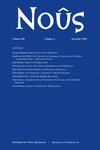 ABSTRACT: We develop a new version of the causal theory of spacetime. Whereas traditional versions of the theory seek to identify spatiotemporal relations with causal relations, the version we develop takes causal relations to be the grounds for spatiotemporal relations. Causation is thus distinct from, and more basic than, spacetime. We argue that this non-identity theory, suitably developed, avoids the challenges facing the traditional identity theory.
ABSTRACT: We develop a new version of the causal theory of spacetime. Whereas traditional versions of the theory seek to identify spatiotemporal relations with causal relations, the version we develop takes causal relations to be the grounds for spatiotemporal relations. Causation is thus distinct from, and more basic than, spacetime. We argue that this non-identity theory, suitably developed, avoids the challenges facing the traditional identity theory.
 ABSTRACT: Surface presentism is the combination of a general relativistic physics with a presentist metaphysics. In this paper, we provide an argument against this combination based on black holes. The problem focuses on the notion of an event horizon. We argue that the present locations of event horizons are ontologically dependent on future black hole regions, and that this dependence is incompatible with presentism. We consider five responses to the problem available to the surface presentist, and argue that none succeed. Surface presentism thus faces the prospect of refutation based on evidence that confirms the existence of black holes. Published article open access.
ABSTRACT: Surface presentism is the combination of a general relativistic physics with a presentist metaphysics. In this paper, we provide an argument against this combination based on black holes. The problem focuses on the notion of an event horizon. We argue that the present locations of event horizons are ontologically dependent on future black hole regions, and that this dependence is incompatible with presentism. We consider five responses to the problem available to the surface presentist, and argue that none succeed. Surface presentism thus faces the prospect of refutation based on evidence that confirms the existence of black holes. Published article open access.
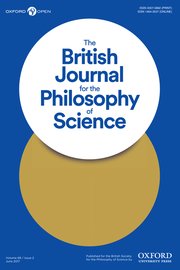 ABSTRACT: The violation of Bell inequalities seems to establish an important fact about the world: that it is non-local. However, this result relies on the assumption of the statistical independence of the measurement settings with respect to potential past events that might have determined them. Superdeterminism refers to the view that a local, and determinist, account of Bell inequalities violations is possible, by rejecting this assumption of statistical independence. We examine and clarify various problems with superdeterminism, looking in particular at its consequences on the nature of scientific laws and scientific reasoning. We argue that the view requires a neo-Humean account of at least some laws, and creates a significant problem for the use of statistical independence in other parts of physics and science more generally. Draft.
ABSTRACT: The violation of Bell inequalities seems to establish an important fact about the world: that it is non-local. However, this result relies on the assumption of the statistical independence of the measurement settings with respect to potential past events that might have determined them. Superdeterminism refers to the view that a local, and determinist, account of Bell inequalities violations is possible, by rejecting this assumption of statistical independence. We examine and clarify various problems with superdeterminism, looking in particular at its consequences on the nature of scientific laws and scientific reasoning. We argue that the view requires a neo-Humean account of at least some laws, and creates a significant problem for the use of statistical independence in other parts of physics and science more generally. Draft.
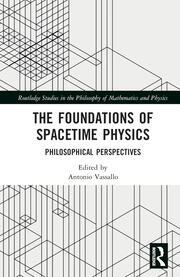 ABSTRACT: The existence and fundamentality of spacetime has been questioned in quantum gravity where spacetime is frequently described as emerging from a more fundamental non-spatiotemporal ontology. This is supposed to lead to various philosophical issues such as the problem of empirical coherence. Yet those issues assume beforehand that we actually understand and agree on the nature of spacetime. Reviewing popular conceptions of spacetime, we find that there is substantial disagreement on this matter, and little hope of resolving it. However, we argue that this should not trouble us as these issues, which seem to suggest the need for an account of spacetime in quantum gravity, can be addressed without one. Draft.
ABSTRACT: The existence and fundamentality of spacetime has been questioned in quantum gravity where spacetime is frequently described as emerging from a more fundamental non-spatiotemporal ontology. This is supposed to lead to various philosophical issues such as the problem of empirical coherence. Yet those issues assume beforehand that we actually understand and agree on the nature of spacetime. Reviewing popular conceptions of spacetime, we find that there is substantial disagreement on this matter, and little hope of resolving it. However, we argue that this should not trouble us as these issues, which seem to suggest the need for an account of spacetime in quantum gravity, can be addressed without one. Draft.
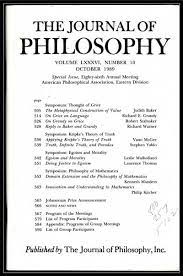 ABSTRACT: According to a number of approaches in theoretical physics spacetime does not exist fundamentally. Rather, spacetime exists by depending on another, more fundamental, non-spatiotemporal structure. A prevalent opinion in the literature is that this dependence should not be analysed in terms of composition. We should not say, that is, that spacetime depends on an ontology of non-spatiotemporal entities in virtue of having them as parts. But is that really right? On the contrary, we argue that a mereological approach to dependent spacetime is not only viable, but promises to enhance our understanding of the physical situation. Draft. Publisher’s link.
ABSTRACT: According to a number of approaches in theoretical physics spacetime does not exist fundamentally. Rather, spacetime exists by depending on another, more fundamental, non-spatiotemporal structure. A prevalent opinion in the literature is that this dependence should not be analysed in terms of composition. We should not say, that is, that spacetime depends on an ontology of non-spatiotemporal entities in virtue of having them as parts. But is that really right? On the contrary, we argue that a mereological approach to dependent spacetime is not only viable, but promises to enhance our understanding of the physical situation. Draft. Publisher’s link.
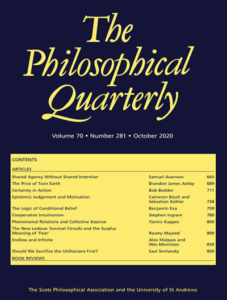 ABSTRACT: A number of philosophers have argued in favour of extended simples on the grounds that they are needed by fundamental physics. The arguments typically appeal to theories of quantum gravity. To date, the argument in favour of extended simples has ignored the fact that the very existence of spacetime is put under pressure by quantum gravity. We thus consider the case for extended simples in the context of different views on the existence of spacetime. We show that the case for extended simples based on physics is far more complex than has been previously thought. We present and then map this complexity, in order to present a much more textured picture of the argument for extended simples. Draft. Publisher’s link.
ABSTRACT: A number of philosophers have argued in favour of extended simples on the grounds that they are needed by fundamental physics. The arguments typically appeal to theories of quantum gravity. To date, the argument in favour of extended simples has ignored the fact that the very existence of spacetime is put under pressure by quantum gravity. We thus consider the case for extended simples in the context of different views on the existence of spacetime. We show that the case for extended simples based on physics is far more complex than has been previously thought. We present and then map this complexity, in order to present a much more textured picture of the argument for extended simples. Draft. Publisher’s link.
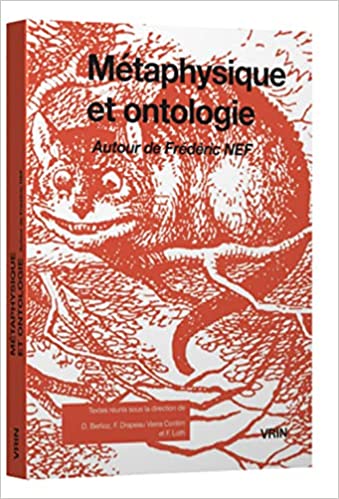 ABSTRACT: « Pourquoi les choses tiennent-elles ensemble ? » (Traité d’ontologie, 2009, p. 237). Cette citation me sert de départ à une réflexion sur la nature des relations liantes souvent appelées relations de comprésence à la suite de Russell, ces bundling relations qui nouent les propriétés ensembles pour constituer les objets ordinaires (tables, chaises, individus biologiques) selon la théorie du faisceau. De même que Frédéric Nef, je suis séduit par les nombreuses vertus philosophiques de ces relations liantes. Ma contribution ne portera pas sur une critique ou une défense de ces relations mais sur l’étude de leur nature, et en particulier, de leur possible nature méréologique. Je vais esquisser rapidement certains aspects de la théorie classique du faisceau que je qualifierai de réaliste pour opposer ensuite les variantes réalistes à deux autres versions méréologiques de la théorie, que je qualifierai d’éliminativistes. Draft.
ABSTRACT: « Pourquoi les choses tiennent-elles ensemble ? » (Traité d’ontologie, 2009, p. 237). Cette citation me sert de départ à une réflexion sur la nature des relations liantes souvent appelées relations de comprésence à la suite de Russell, ces bundling relations qui nouent les propriétés ensembles pour constituer les objets ordinaires (tables, chaises, individus biologiques) selon la théorie du faisceau. De même que Frédéric Nef, je suis séduit par les nombreuses vertus philosophiques de ces relations liantes. Ma contribution ne portera pas sur une critique ou une défense de ces relations mais sur l’étude de leur nature, et en particulier, de leur possible nature méréologique. Je vais esquisser rapidement certains aspects de la théorie classique du faisceau que je qualifierai de réaliste pour opposer ensuite les variantes réalistes à deux autres versions méréologiques de la théorie, que je qualifierai d’éliminativistes. Draft.
 ABSTRACT: As a candidate theory of quantum gravity, the popularity of string theory has waxed and waned over the past four decades. One current source of scepticism is that the theory can be used to derive, depending upon the input geometrical assumptions that one makes, a vast range of different quantum field theories, giving rise to the so-called landscape problem. One apparent way to address the landscape problem is to posit the existence of a multiverse; this, however, has in turn drawn heightened attention to questions regarding the empirical testability and predictivity of string theory. We argue first that the landscape problem relies on dubious assumptions and does not motivate a multiverse hypothesis. Nevertheless, we then show that the multiverse hypothesis is scientifically legitimate and could be coupled to string theory for other empirical reasons. Looking at various cosmological approaches, we offer an empirical criterion to assess the scientific status of multiverse hypotheses. Paper open access.
ABSTRACT: As a candidate theory of quantum gravity, the popularity of string theory has waxed and waned over the past four decades. One current source of scepticism is that the theory can be used to derive, depending upon the input geometrical assumptions that one makes, a vast range of different quantum field theories, giving rise to the so-called landscape problem. One apparent way to address the landscape problem is to posit the existence of a multiverse; this, however, has in turn drawn heightened attention to questions regarding the empirical testability and predictivity of string theory. We argue first that the landscape problem relies on dubious assumptions and does not motivate a multiverse hypothesis. Nevertheless, we then show that the multiverse hypothesis is scientifically legitimate and could be coupled to string theory for other empirical reasons. Looking at various cosmological approaches, we offer an empirical criterion to assess the scientific status of multiverse hypotheses. Paper open access.
 ABSTRACT: Spacetime functionalism is the view that spacetime is a functional structure implemented by a more fundamental ontology. Lam and Wüthrich have recently argued that spacetime functionalism helps to solve the epistemological problem of empirical coherence in quantum gravity and suggested that it also (dis)solves the hard problem of spacetime, namely the problem of offering a picture consistent with the emergence of spacetime from a non-spatio-temporal structure. First, I will deny that spacetime functionalism solves the hard problem by showing that it comes in various species, each entailing a different attitude towards, or answer to, the hard problem. Second, I will argue that the existence of an explanatory gap, which grounds the hard problem, has not been correctly taken into account in the literature. Draft. Publisher’s link.
ABSTRACT: Spacetime functionalism is the view that spacetime is a functional structure implemented by a more fundamental ontology. Lam and Wüthrich have recently argued that spacetime functionalism helps to solve the epistemological problem of empirical coherence in quantum gravity and suggested that it also (dis)solves the hard problem of spacetime, namely the problem of offering a picture consistent with the emergence of spacetime from a non-spatio-temporal structure. First, I will deny that spacetime functionalism solves the hard problem by showing that it comes in various species, each entailing a different attitude towards, or answer to, the hard problem. Second, I will argue that the existence of an explanatory gap, which grounds the hard problem, has not been correctly taken into account in the literature. Draft. Publisher’s link.
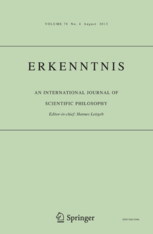 ABSTRACT: The relevance of analytic metaphysics has come under criticism: Ladyman & Ross, for instance, have suggested do discontinue the field. French & McKenzie have argued in defense of analytic metaphysics that it develops tools that could turn out to be useful for philosophy of physics. In this article, we show first that this heuristic defense of metaphysics can be extended to the scientific field of applied ontology, which uses constructs from analytic metaphysics. Second, we elaborate on a parallel by French & McKenzie between mathematics and metaphysics to show that the whole field of analytic metaphysics, being useful not only for philosophy but also for science, should continue to exist as a largely autonomous field. Draft. Publisher’s link.
ABSTRACT: The relevance of analytic metaphysics has come under criticism: Ladyman & Ross, for instance, have suggested do discontinue the field. French & McKenzie have argued in defense of analytic metaphysics that it develops tools that could turn out to be useful for philosophy of physics. In this article, we show first that this heuristic defense of metaphysics can be extended to the scientific field of applied ontology, which uses constructs from analytic metaphysics. Second, we elaborate on a parallel by French & McKenzie between mathematics and metaphysics to show that the whole field of analytic metaphysics, being useful not only for philosophy but also for science, should continue to exist as a largely autonomous field. Draft. Publisher’s link.
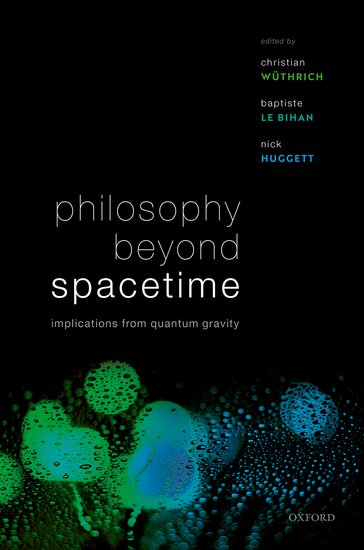 ABSTRACT: The present volume collects essays on the philosophical foundations of quantum theories of gravity, such as loop quantum gravity and string theory. Central for philosophical concerns is quantum gravity’s suggestion that space and time, or spacetime, may not exist fundamentally, but instead be a derivative entity emerging from non-spatiotemporal degrees of freedom. In the spirit of naturalised metaphysics, contributions to this volume consider the philosophical implications of this suggestion. In turn, philosophical methods and insights are brought to bear on the foundations of quantum gravity itself. For instance, the idea of functionalism, borrowed from the philosophy of mind and discussed by several essays, exemplifies this mutual interaction the collection seeks to foster. Draft.
ABSTRACT: The present volume collects essays on the philosophical foundations of quantum theories of gravity, such as loop quantum gravity and string theory. Central for philosophical concerns is quantum gravity’s suggestion that space and time, or spacetime, may not exist fundamentally, but instead be a derivative entity emerging from non-spatiotemporal degrees of freedom. In the spirit of naturalised metaphysics, contributions to this volume consider the philosophical implications of this suggestion. In turn, philosophical methods and insights are brought to bear on the foundations of quantum gravity itself. For instance, the idea of functionalism, borrowed from the philosophy of mind and discussed by several essays, exemplifies this mutual interaction the collection seeks to foster. Draft.
 ABSTRACT: Eternalism, the view that what we regard locally as being located in the past, the present and the future equally exists, is the best ontological account of temporal existence in line with special and general relativity. However, special and general relativity are not fundamental theories and several research programs aim at finding a more fundamental theory of quantum gravity weaving together all we know from relativistic physics and quantum physics. Interestingly, some of these approaches assert that time is not fundamental. If time is not fundamental, what does it entail for eternalism and the standard debate over existence in time? First, I will argue that the non-fundamentality of time to be found in string theory entails standard eternalism. Second, I will argue that the non-fundamentality of time to be found in loop quantum gravity entails atemporal eternalism, namely a novel position in the spirit of standard eternalism. Draft. Publisher’s link.
ABSTRACT: Eternalism, the view that what we regard locally as being located in the past, the present and the future equally exists, is the best ontological account of temporal existence in line with special and general relativity. However, special and general relativity are not fundamental theories and several research programs aim at finding a more fundamental theory of quantum gravity weaving together all we know from relativistic physics and quantum physics. Interestingly, some of these approaches assert that time is not fundamental. If time is not fundamental, what does it entail for eternalism and the standard debate over existence in time? First, I will argue that the non-fundamentality of time to be found in string theory entails standard eternalism. Second, I will argue that the non-fundamentality of time to be found in loop quantum gravity entails atemporal eternalism, namely a novel position in the spirit of standard eternalism. Draft. Publisher’s link.
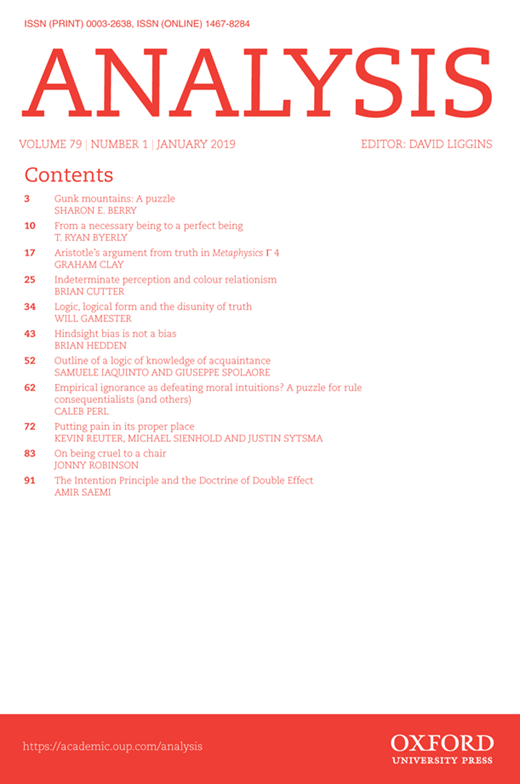 ABSTRACT: In a recent article, Ned Markosian gives an argument against four-dimensionalism understood as the view that time is one of four identical dimensions that constitute a single four-dimensional manifold. In this paper, I show that Markosian attacks a straw man as his argument targets a theory known to be false on empirical grounds. Four-dimensionalism rightly conceived in no way entails that time is identical to space. I then address two objections raised by Markosian against four-dimensionalism rightly conceived. Draft. Publisher’s link.
ABSTRACT: In a recent article, Ned Markosian gives an argument against four-dimensionalism understood as the view that time is one of four identical dimensions that constitute a single four-dimensional manifold. In this paper, I show that Markosian attacks a straw man as his argument targets a theory known to be false on empirical grounds. Four-dimensionalism rightly conceived in no way entails that time is identical to space. I then address two objections raised by Markosian against four-dimensionalism rightly conceived. Draft. Publisher’s link.
 ABSTRACT: Important features of space and time are taken to be missing in quantum gravity, allegedly requiring an explanation of the emergence of spacetime from non-spatio-temporal theories. In this paper, we argue that the explanatory gap between general relativity and non-spatio-temporal quantum gravity theories might significantly be reduced with two moves. First, we point out that spacetime is already partially missing in the context of general relativity when understood from a dynamical perspective. Second, we argue that most approaches to quantum gravity already start with an in-built distinction between structures to which the asymmetry between space and time can be traced back. Draft. Publisher’s link.
ABSTRACT: Important features of space and time are taken to be missing in quantum gravity, allegedly requiring an explanation of the emergence of spacetime from non-spatio-temporal theories. In this paper, we argue that the explanatory gap between general relativity and non-spatio-temporal quantum gravity theories might significantly be reduced with two moves. First, we point out that spacetime is already partially missing in the context of general relativity when understood from a dynamical perspective. Second, we argue that most approaches to quantum gravity already start with an in-built distinction between structures to which the asymmetry between space and time can be traced back. Draft. Publisher’s link.
 ABSTRACT: Neutral monism aims at solving the hard problem of consciousness by positing entities that are neither mental nor physical. Benovsky has recently argued for the slightly different account that, rather than being neutral, natural entities are both mental and physical by having different aspects, and then argued in favour of an anti-realist interpretation of those aspects. In this essay, operating under the assumption of dual-aspect monism, I argue to the contrary in favour of a realist interpretation of these aspects by showing that the anti-realist interpretation collapses into neutral monism and that the realist interpretation is an interesting alternative. I close with a discussion of the realist interpretation of the aspects and its relation with panpsychism. Draft. Publisher’s link.
ABSTRACT: Neutral monism aims at solving the hard problem of consciousness by positing entities that are neither mental nor physical. Benovsky has recently argued for the slightly different account that, rather than being neutral, natural entities are both mental and physical by having different aspects, and then argued in favour of an anti-realist interpretation of those aspects. In this essay, operating under the assumption of dual-aspect monism, I argue to the contrary in favour of a realist interpretation of these aspects by showing that the anti-realist interpretation collapses into neutral monism and that the realist interpretation is an interesting alternative. I close with a discussion of the realist interpretation of the aspects and its relation with panpsychism. Draft. Publisher’s link.
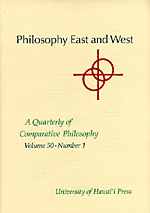 ABSTRACT: Several philosophers, both in Buddhist and Western philosophy, have claimed that the self does not exist. This no-self view may, at first glance, appear as a reason to believe that life is meaningless. In the present article, I argue indirectly in favor of the no-self view by showing that it does not entail that life is meaningless. I then examine Buddhism and argue that the view may even be construed further as partially grounding an account of the meaning of life. Draft. See the discussion by John Danaher.
ABSTRACT: Several philosophers, both in Buddhist and Western philosophy, have claimed that the self does not exist. This no-self view may, at first glance, appear as a reason to believe that life is meaningless. In the present article, I argue indirectly in favor of the no-self view by showing that it does not entail that life is meaningless. I then examine Buddhism and argue that the view may even be construed further as partially grounding an account of the meaning of life. Draft. See the discussion by John Danaher.
 ABSTRACT: ‘Space does not exist fundamentally: it emerges from a more fundamental non-spatial structure.’ This intriguing claim appears in various research programs in contemporary physics. Philosophers of physics tend to believe that this claim entails either that spacetime does not exist, or that it is derivatively real. In this article, I introduce and defend a third metaphysical interpretation of the claim: reductionism about space. I argue that, as a result, there is no need to subscribe to fundamentality, layers of reality and emergence in order to analyse the constitution of space by non-spatial entities. It follows that space constitution, if borne out, does not provide empirical evidence in favour of a stratified, Aristotelian in spirit, metaphysics. The view will be described in relation to two particular research programs in contemporary physics: wave function realism and loop quantum gravity. Published article (open access).
ABSTRACT: ‘Space does not exist fundamentally: it emerges from a more fundamental non-spatial structure.’ This intriguing claim appears in various research programs in contemporary physics. Philosophers of physics tend to believe that this claim entails either that spacetime does not exist, or that it is derivatively real. In this article, I introduce and defend a third metaphysical interpretation of the claim: reductionism about space. I argue that, as a result, there is no need to subscribe to fundamentality, layers of reality and emergence in order to analyse the constitution of space by non-spatial entities. It follows that space constitution, if borne out, does not provide empirical evidence in favour of a stratified, Aristotelian in spirit, metaphysics. The view will be described in relation to two particular research programs in contemporary physics: wave function realism and loop quantum gravity. Published article (open access).
 ABSTRACT: A ‘duality’ is a formal mapping between the spaces of solutions of two empirically equivalent theories. In recent times, dualities have been found to be pervasive in string theory and quantum field theory. Naïvely interpreted, duality-related theories appear to make very different ontological claims about the world—differing in e.g. space-time structure, fundamental ontology, and mereological structure. In light of this, duality-related theories raise questions familiar from discussions of underdetermination in the philosophy of science: in the presence of dual theories, what is one to say about the ontology of the world? In this paper, we undertake a comprehensive and non- technical survey of the landscape of possible ontological interpretations of duality-related theories. We provide a significantly enriched and clarified taxonomy of options—several of which are novel to the literature. Draft. Publisher’s link.
ABSTRACT: A ‘duality’ is a formal mapping between the spaces of solutions of two empirically equivalent theories. In recent times, dualities have been found to be pervasive in string theory and quantum field theory. Naïvely interpreted, duality-related theories appear to make very different ontological claims about the world—differing in e.g. space-time structure, fundamental ontology, and mereological structure. In light of this, duality-related theories raise questions familiar from discussions of underdetermination in the philosophy of science: in the presence of dual theories, what is one to say about the ontology of the world? In this paper, we undertake a comprehensive and non- technical survey of the landscape of possible ontological interpretations of duality-related theories. We provide a significantly enriched and clarified taxonomy of options—several of which are novel to the literature. Draft. Publisher’s link.
ABSTRACT: According to presentism, only the present exists. The view is in a bad dialectical situation since it has to face several objections based on physics and a priori arguments. The view remains nonetheless popular because it is, allegedly, more intuitive than alternative views, namely eternalism (past, present and future entities exist) and no-futurism (only past and present entities exist). In the essay, I shall not discuss whether intuitivity is an accurate criterion for ontological enquiry. I will rather argue that any philosophically acceptable version of presentism entails highly counterintuitive consequences. Indeed, the presentist has to commit herself to substantial claims in order to provide an answer to two problems : the grounding problem and the cross-temporal relations problem. Therefore, if the main motivation for presentism is the willingness to stick with common sense intuitions, presentists should consider endorsing another view about existence in time. Publisher’s link (open access).
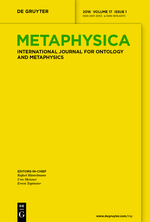 ABSTRACT: I will defend two claims. First, Schaffer’s priority monism is in tension with many research programs in quantum gravity. Second, priority monism can be modified into a view more amenable to this physics. The first claim is grounded in the fact that promising approaches to quantum gravity such as loop quantum gravity or string theory deny the fundamental reality of spacetime. Since fundamental spacetime plays an important role in Schaffer’s priority monism by being identified with the fundamental structure, namely the cosmos, the disappearance of spacetime in these views might undermine classical priority monism. My second claim is that priority monism can avoid this issue with two moves: first, in dropping one of its core assumption, namely that the fundamental structure is spatio-temporal, second, by identifying the connection between the non-spatio-temporal structure and the derivative spatio-temporal structure with mereological composition. The penultimate draft is here. Publisher’s link.
ABSTRACT: I will defend two claims. First, Schaffer’s priority monism is in tension with many research programs in quantum gravity. Second, priority monism can be modified into a view more amenable to this physics. The first claim is grounded in the fact that promising approaches to quantum gravity such as loop quantum gravity or string theory deny the fundamental reality of spacetime. Since fundamental spacetime plays an important role in Schaffer’s priority monism by being identified with the fundamental structure, namely the cosmos, the disappearance of spacetime in these views might undermine classical priority monism. My second claim is that priority monism can avoid this issue with two moves: first, in dropping one of its core assumption, namely that the fundamental structure is spatio-temporal, second, by identifying the connection between the non-spatio-temporal structure and the derivative spatio-temporal structure with mereological composition. The penultimate draft is here. Publisher’s link.
 ABSTRACT: L’éternalisme implique une forme exotique d’éternité : toute entité, aussi éphémère soit-elle et quelle que soit sa localisation dans le temps, existe relativement à toute autre localisation temporelle. Cet essai vise, premièrement, à défendre l’éternalisme en exhibant les difficultés rédhibitoires du présentisme et du non-futurisme, et deuxièmement à examiner de quelle manière l’éternalisme pourrait être amendé à l’aune d’une affirmation que l’on trouve sous la plume de certains physiciens, à savoir que, fondamentalement, le temps n’existe pas. La disparition du temps est-elle compatible avec la thèse éternaliste ? Enfin, en guise de conclusion, nous examinerons brièvement une conséquence curieuse de l’éternalisme : bien que mortels, nous sommes des êtres éternels. Draft. Publisher’s link.
ABSTRACT: L’éternalisme implique une forme exotique d’éternité : toute entité, aussi éphémère soit-elle et quelle que soit sa localisation dans le temps, existe relativement à toute autre localisation temporelle. Cet essai vise, premièrement, à défendre l’éternalisme en exhibant les difficultés rédhibitoires du présentisme et du non-futurisme, et deuxièmement à examiner de quelle manière l’éternalisme pourrait être amendé à l’aune d’une affirmation que l’on trouve sous la plume de certains physiciens, à savoir que, fondamentalement, le temps n’existe pas. La disparition du temps est-elle compatible avec la thèse éternaliste ? Enfin, en guise de conclusion, nous examinerons brièvement une conséquence curieuse de l’éternalisme : bien que mortels, nous sommes des êtres éternels. Draft. Publisher’s link.
 ABSTRACT: I will introduce and motivate eliminativist super-relationism. This is the conjunction of relationism about spacetime and eliminativism about material objects. According to the view, the universe is a big collection of spatio-temporal relations and natural properties, and no substance (material or spatio-temporal) exists in it. The view is original since eliminativism about material objects, when understood as including not only ordinary objects like tables or chairs but also physical particles, is generally taken to imply substantivalism about spacetime: if properties are directly instantiated by spacetime without the mediation of material objects, then, surely, spacetime has to be a substance. After introducing briefly the two debates about spacetime (§1) and material objects (§2), I will present Schaffer’s super-substantivalism (§3), the conjunction of substantivalism about spacetime and eliminativism about material objects at the fundamental level. I shall then expose and discuss the assumption from which the implication from eliminativism to substantivalism is drawn, and discuss the compatibility of eliminativism with relationism: if spacetime is not a substance, and if material objects are not real, how are we to understand the instantiation of properties (4§)? And what are the relata of spatio-temporal relations (5§)? I then show that each argument in favor of super-substantivalism offered by Schaffer also holds for super-relationism (§6) and examine several metaphysical consequences of the view (§7). I conclude that both super-substantivalism and super-relationism are compatible with Schaffer’s priority monism (§8). The penultimate draft is here. Publisher’s link.
ABSTRACT: I will introduce and motivate eliminativist super-relationism. This is the conjunction of relationism about spacetime and eliminativism about material objects. According to the view, the universe is a big collection of spatio-temporal relations and natural properties, and no substance (material or spatio-temporal) exists in it. The view is original since eliminativism about material objects, when understood as including not only ordinary objects like tables or chairs but also physical particles, is generally taken to imply substantivalism about spacetime: if properties are directly instantiated by spacetime without the mediation of material objects, then, surely, spacetime has to be a substance. After introducing briefly the two debates about spacetime (§1) and material objects (§2), I will present Schaffer’s super-substantivalism (§3), the conjunction of substantivalism about spacetime and eliminativism about material objects at the fundamental level. I shall then expose and discuss the assumption from which the implication from eliminativism to substantivalism is drawn, and discuss the compatibility of eliminativism with relationism: if spacetime is not a substance, and if material objects are not real, how are we to understand the instantiation of properties (4§)? And what are the relata of spatio-temporal relations (5§)? I then show that each argument in favor of super-substantivalism offered by Schaffer also holds for super-relationism (§6) and examine several metaphysical consequences of the view (§7). I conclude that both super-substantivalism and super-relationism are compatible with Schaffer’s priority monism (§8). The penultimate draft is here. Publisher’s link.
(5) 2016. ‘Les propriétés du vide et de l’espace-temps’, Philosophiques 43(1): 49-66.
ABSTRACT: Les propriétés matérielles sont généralement appréhendées comme les propriétés d’une substance matérielle : cette chemise possède la propriété d’être bleue, cette chaussure la propriété d’être en bon état. Pourtant, on peut trouver plusieurs raisons de douter que les propriétés soient nécessairement les propriétés d’une substance matérielle, à la fois en métaphysique avec la théorie du faisceau, et en physique contemporaine à travers les notions d’énergie du vide et de champ. Or, si les propriétés ne sont pas les propriétés de substances matérielles, on peut s’interroger sur la théorie de l’instanciation qu’implique une telle thèse. Dans cet essai, je m’emploierai à examiner la cohérence et la plausibilité de la thèse selon laquelle certaines, voir toutes les, propriétés matérielles, ne sont pas instanciées par une substance et la théorie de l’instanciation qui en découle. L’article est disponible en libre accès ici.
(4) 2015. ‘No Physical Particles for a Dispositional Monist?’, Philosophical Papers 44 (2): 207-232.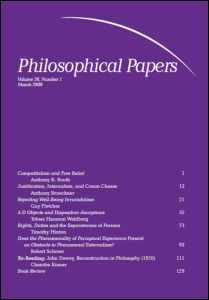 ABSTRACT: Dispositional monists believe that all properties are essentially causal. Recently, an overdetermination argument has been proposed by Trenton Merricks to support nihilism about ordinary objects. I argue that this argument can be extended to target both nihilism about ordinary objects and nihilism about physical particles when dispositional monism is assumed. It implies that a philosopher who both endorses dispositional monism and takes seriously the overdetermination argument should not believe in the existence of physical particles. I end up by discussing possible objections. I suggest, then, that if we live in a world that is inhabited by causal properties but not by chairs and tables, then we also live in a world without electrons and quarks, a world of dispositional properties, that is, a world of causal fields. The draft is here. Publisher’s link with 50 free Eprints.
ABSTRACT: Dispositional monists believe that all properties are essentially causal. Recently, an overdetermination argument has been proposed by Trenton Merricks to support nihilism about ordinary objects. I argue that this argument can be extended to target both nihilism about ordinary objects and nihilism about physical particles when dispositional monism is assumed. It implies that a philosopher who both endorses dispositional monism and takes seriously the overdetermination argument should not believe in the existence of physical particles. I end up by discussing possible objections. I suggest, then, that if we live in a world that is inhabited by causal properties but not by chairs and tables, then we also live in a world without electrons and quarks, a world of dispositional properties, that is, a world of causal fields. The draft is here. Publisher’s link with 50 free Eprints.
(3) 2015. ‘The Unrealities of Time’, Dialogue: Canadian Philosophical Review 54 (1): 25-44.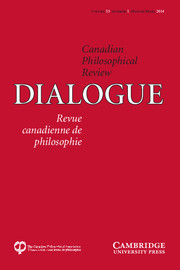 ABSTRACT: is time flowing? A-theorists say yes, B-theorists say no. But both take time to be real. It means that B-theorists accept that time might be real, even if lacking a property usually ascribed to it. In this paper, I want to ask what are the different properties usually ascribed to time in order to draw the list of different possible kinds of realism and anti-realism about time. As we will see, there are three main kinds of anti-realism. It will appear that if time is defined as the universe’s fourth dimension, there is no way time could be unreal. The draft is here ; Publisher’s link.
ABSTRACT: is time flowing? A-theorists say yes, B-theorists say no. But both take time to be real. It means that B-theorists accept that time might be real, even if lacking a property usually ascribed to it. In this paper, I want to ask what are the different properties usually ascribed to time in order to draw the list of different possible kinds of realism and anti-realism about time. As we will see, there are three main kinds of anti-realism. It will appear that if time is defined as the universe’s fourth dimension, there is no way time could be unreal. The draft is here ; Publisher’s link.
(2) 2014. ‘No-futurism and Metaphysical Contingentism’, Axiomathes 24: 483-497. ABSTRACT: According to no-futurism, past and present entities are real, but future ones are not. This view faces a skeptical challenge (Bourne 2002, 2006, Braddon-Mitchell, 2004): if no-futurism is true, how do you know you are present? I shall propose a new skeptical argument based on the physical possibility of Gödelian worlds (1949). This argument shows that a no-futurist has to endorse a metaphysical contingentist reading of no-futurism, the view that no-futurism is contingently true. But then, the no-futurist has to face a new skeptical challenge: how do you know that you are in a no-futurist world? Publisher’s link ; Free penultimate draft.
ABSTRACT: According to no-futurism, past and present entities are real, but future ones are not. This view faces a skeptical challenge (Bourne 2002, 2006, Braddon-Mitchell, 2004): if no-futurism is true, how do you know you are present? I shall propose a new skeptical argument based on the physical possibility of Gödelian worlds (1949). This argument shows that a no-futurist has to endorse a metaphysical contingentist reading of no-futurism, the view that no-futurism is contingently true. But then, the no-futurist has to face a new skeptical challenge: how do you know that you are in a no-futurist world? Publisher’s link ; Free penultimate draft.
(1) 2013. ‘Why a Gunk World is Compatible with Nihilism about Objects’, Studia Philosophica Estonica, 6 (1), 1-14.
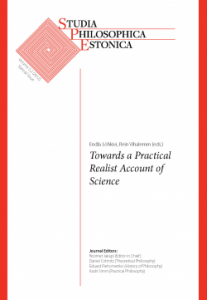
ABSTRACT: Ted Sider argues that nihilism about objects is incompatible with the metaphysical possibility of gunk and takes this point to show that nihilism is flawed. I shall describe one kind of nihilism able to answer this objection. I believe that most of the things we usually encounter do not exist. That is, I take talk of macroscopic objects and macroscopic properties to refer to sets of fundamental properties, which are invoked as a matter of linguistic convention. This view is a kind of nihilism: it rules out the existence of objects; that is, from an ontological point of view, there are no objects. But unlike the moderate nihilism of Mark Heller, Peter van Inwagen and Trenton Merricks that claims that most objects do not exist, I endorse a radical nihilism according to which there are no objects in the world, but only properties instantiated in spacetime. As I will show, radical nihilism is perfectly compatible with the metaphysical possibility of gunk. It is also compatible with the epistemic possibility that we actually live in a gunk world. The objection raised by Ted Sider only applies to moderate nihilism that admits some objects in its ontology. Paper (open acces)
 |
 |
 |
 |
 |
 |
|
 |
 |
 |
 |
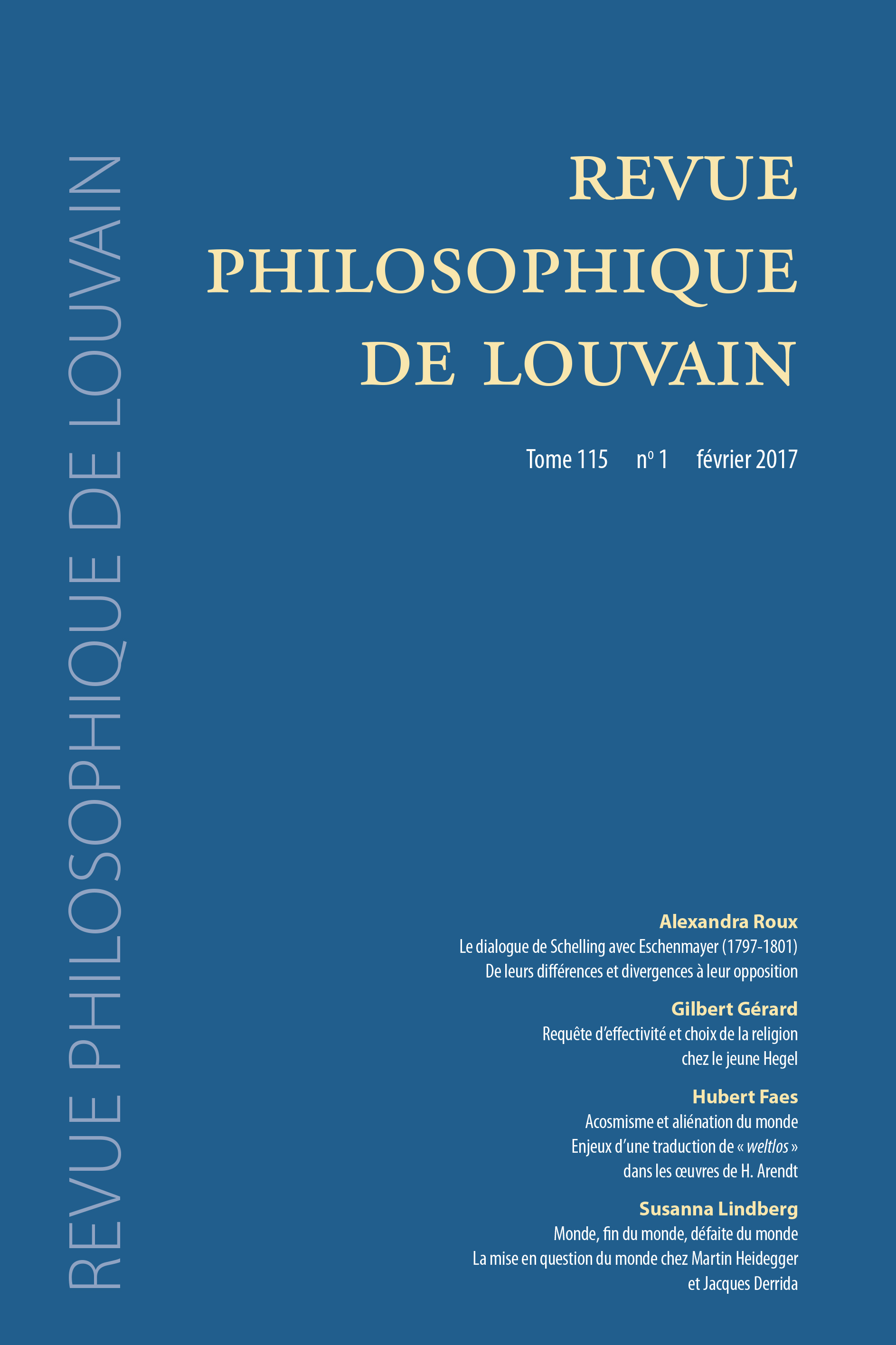 |
 |
|
 |
 |
 |
 |
 |
 |
|
 |
 |
 |
 |
 |
 |